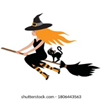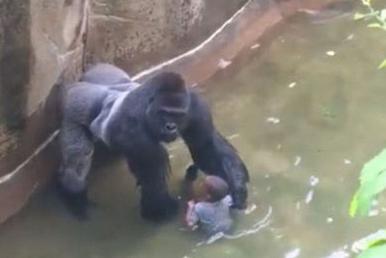
Scooby-Doo on Zombie Island[1] is subversive both in terms of subverting what you’d expect from a typical Scooby outing (substituting criminals in masks with genuine monsters) and subverting ideas of what it truly means to be villainous. Immortal werecats Simone and Lena (fig. 1) sacrificed their souls to their cat god to exact revenge against the pirates who devastated their home, and are doomed to forever drain the lifeforce from others for their own survival. The exploration into animal/human relations here is an unusual one – both cats and women have been historically aligned with witchcraft and the occult, and as such the fusion of the two forges a creature symbolic of mistrust and superstition whilst also being somewhat sympathetic.

Simone and Lena’s worship alludes to how, in Ancient Egypt, cat goddess Bastet (fig. 2) was deified as ‘the eye of the moon’[2]. Cats were sacred, illustrating the close historical relationship humanity has had with them from objects of worship to close companions. Lunar symbolism can be seen upon the moon dial engraved with the face of a cat (fig. 3), connoting the dim light of the moon cast against the darkness of the night sky, evocative of the sliver of humanity lingering within the werecats.
Humanity and inhumanity intertwine to create creatures of horror who do what they must for reasons of survival, blurring the boundaries between good and evil. The high-angle shot of Simone elevating her hands in worship above the dial (fig. 3) cuts to a close-up of her with the cat deity looming behind her shoulder (fig. 4), which shows her positions as human and cat. This, coupled with the haunting extra-diegetic music creates a sinister tone and gleans both the intersection between cats and the supernatural, and the dichotomy between their human and werecat selves.

Figure 3 – the moon dial inscribed with a cat’s face. 
Figure 4 – the cat statue looming behind Simone.


The mise-en-scene produces a chilling atmosphere reminiscent of the horror genre, a darkness atypical for a children’s movie. The design of the werecats merge imagery of the human and inhuman: Simone wears a necklace emblazoned with a cat which demonstrates her reverence of her cat god and also her status as a werecat, suggesting the close relationship between cats and humankind. Moreover, the initial transformation from human to werecat unites characteristics of both species, retaining much of their human form but gaining claws, fangs, and catlike eyes and ears. This marries together predator and prey, constructing a figure built from the superstition that encompasses both women and cats, whilst also possessing a degree of humanity. Their betrayal hurts the protagonists, of course, but, however, what they had suffered to be where and what they are makes the audience question if they really are true villains or just driven by instinct and necessity. It invokes questions of moral righteousness – if a human was to invade an animals territory, and the animal was to then attack, would the animal really be in the wrong? (Fig. 5).

An obvious example of cats and women being associated with the supernatural is witchcraft (fig. 6). The werecats blend together witch and familiar. The low-angle shot of the cat effigy bathed in firelight pans down to reveal restrained wax dolls, exemplifying concepts of magic and dominance, and producing a connection to the occult. Furthermore, the movie subverts misogynistic stereotypes in a sense that the women are in possession of the power (even having a man who they are essentially in control over), however, they also possess somewhat understandable motivations and thus a level of sympathy is produced for them (fig. 7).
The werecats are presented as sympathetic predators, echoing the voracious natures of big cats (figs. 8/9) who kill for necessity rather than enjoyment. Simone and Lena are multifaceted in their villainy due to their motivations, demonstrating the intricacies of human/cat relations, as humans traditionally see cats as both lucky and unlucky, as beings of worship, as pets, and as things to be feared.

Figure 8 – the human/cat hybrid predator. 
Figure 9 – the design of Simone and Lena is strikingly similar to the big cats they are based upon.
[1] Stenstrum, Jim, dir., Scooby-Doo on Zombie Island (Hanna-Barbara Cartoons, 1998)
[2] Rosicrucian Egyptian Museum, ‘Deities in Ancient Egypt – Bastet’, Rosicrucian Egyptian Museum, 2021 <https://egyptianmuseum.org/deities-Bastet> [accessed 3rd November 2021]